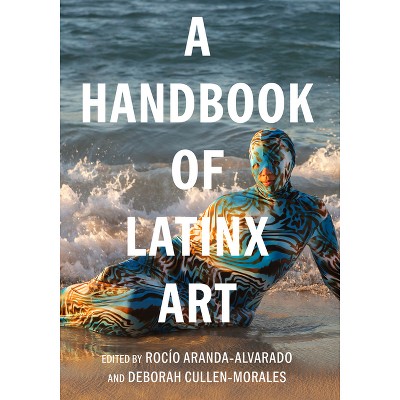Sponsored

This Must Be the Place: An Oral History of Latin American Artists in New York, 1965-1975 - by Aime Iglesias Lukin (Paperback)
In Stock
Sponsored
About this item
Highlights
- An oral history of the Latin American artists who moved to New York in the late 1960s and pioneered a new conceptualism informed by their migrant experiencesIn the late 1960s and early 1970s, during a time of global cultural and social upheaval, a key group of Latin American artists migrated to New York.
- Author(s): Aime Iglesias Lukin
- 432 Pages
- Art, American
Description
About the Book
In the late 1960s and early 1970s, during a time of global cultural and social upheaval, a key group of Latin American artists migrated to New York. Part of the generational shift toward Happenings, Minimalism and Conceptualism, they worked in conversation with experimental practices while exploring topics of migration, identity, politics, exile and nostalgia. Drawing from both American culture and the cultures of their countries of origin, their works reflect the unique perspectives both as insiders and outsiders that these artists had as newcomers. Conceived as a visual reader with newly sourced and existing testimonies, This Must Be the Place is the first book of its kind to highlight this generation of artists in interviews and primary source material. Organized by themes and illustrated with artworks, photographs and other archival material, the testimonies of these artists offer the reader a dynamic, candid and historically rich memoir of 1960s and 1970s New York. Exhibition: Americas Society, New York, USA (15.09. - 15.05.2022).Book Synopsis
An oral history of the Latin American artists who moved to New York in the late 1960s and pioneered a new conceptualism informed by their migrant experiences
In the late 1960s and early 1970s, during a time of global cultural and social upheaval, a key group of Latin American artists migrated to New York. Part of the generational shift toward Happenings, Minimalism and Conceptualism, the group worked in conversation with experimental practices while exploring topics of migration, identity, politics, exile, and nostalgia. Drawing from both American culture and the cultures of their countries of origin, their works reflect the unique perspectives--both as insiders and outsiders--that these artists had as newcomers.
Conceived as a visual reader with newly sourced and existing testimonies, This Must Be the Place is the first book of its kind to highlight this generation of artists in interviews and primary source material. Organized by themes and illustrated with artworks, photographs and other archival material, the testimonies of these artists offer the reader a dynamic, candid and historically rich memoir of 1960s and 1970s New York.
Review Quotes
This book, published at the tail end of the two-part exhibition of the same name, expands on the doctoral dissertation research of Aime´ Iglesias Lukin, the director and chief curator of the Americas Society. Both the exhibition and the book make valuable contributions to the study of art made in and in relation to New York City, to the history of art made by artists from Latin America, and to the body of scholarship tracing the transnational networks artists from the region circulated through during the late sixties and early seventies....The book and exhibition are positioned as "inspiration for future research into the many interconnections between artworks, communities, and lives that have yet to be celebrated". This Must Be the Place, making a wealth of recollections, works of art, and documentation available to a larger public, is the generous first step.--Niko Vicario "Latin American and Latinx Visual Culture"
[It's] greatest strength is its insistence that the US did not passively allow representation; artists had to fight for it.--Billy Anania "Hyperallergic"
Makes a salient point that while we often view immigration as an isolating experience, Latin American artists fomented New York's cultural boom through at times fleeting yet supple collaborative networks.--Ela Bittencourt "ArtReview"
To Latino artists it was both home and battleground. To Latin American transplants it was a stage where a politics of aesthetics was playing out in new avant-garde styles and forms: Minimalism, Conceptualism, video and performance. And what extraordinary artists the experiments brought to New York.--Holland Cotter "New York Times: Arts"













